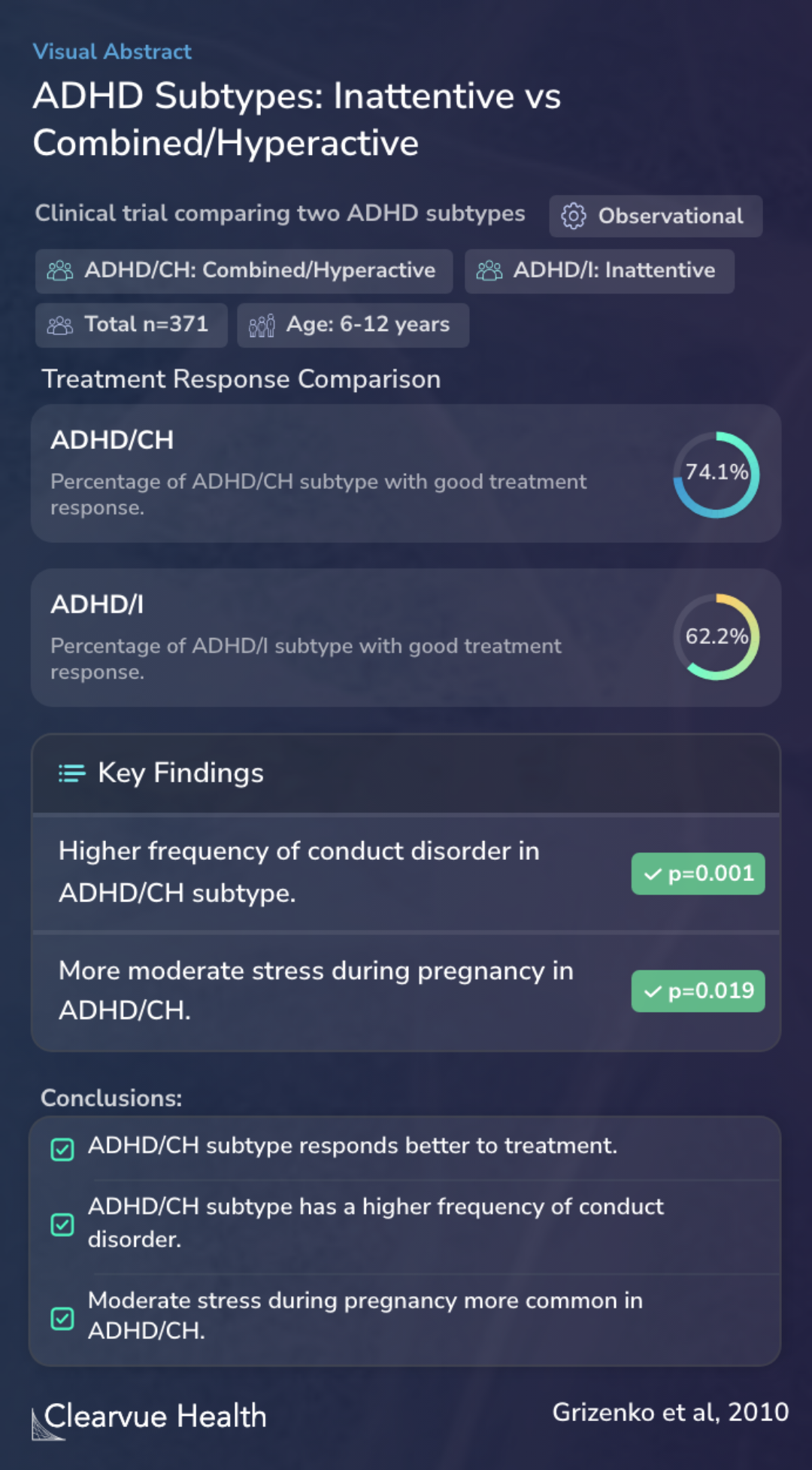Comparing ADHD Subtypes: Differences and Responses
ADHD Subtypes: Inattentive vs Combined/Hyperactive
Grizenko N, Paci M, Joober R

Objectives
The study aimed to compare two subtypes of ADHD: the combined/hyperactive subtype (ADHD/CH) and the inattentive subtype (ADHD/I). Specifically, the authors focused on understanding the differences in comorbidity, how each subtype responds to treatment, and exploring potential causes. By comparing these two subtypes, the research sought to uncover deeper insights into the complex nature of ADHD.
To compare the ADHD combined/hyperactive subtype (ADHD/CH) to the ADHD inattentive subtype (ADHD/I) on the level of comorbidity, treatment response, and possible etiological factors.
Methods
The study enrolled 371 children, all clinically diagnosed with ADHD and aged between 6 and 12 years, in a clinical trial. This trial, which was both double-blind and placebo-controlled, primarily investigated how each ADHD subtype responded to methylphenidate, a common ADHD medication. Additionally, the study assessed comorbidity and stress during the mothers' pregnancies. It also involved genotyping for specific genes, namely DAT, DRD4, and 5-HTT. This detailed methodology allowed for a comprehensive comparison of the ADHD subtypes.
A total of 371 clinically referred children diagnosed with ADHD aged between 6 and 12 years are recruited for a double-blind, placebo-controlled trial of methylphenidate. Comorbidity, treatment response, and stress during pregnancy are assessed for each participant. Genotyping is done fo...
Results
The results revealed several key differences between the ADHD subtypes. Children with the ADHD/CH subtype not only exhibited a higher frequency of conduct disorder but also showed a more favorable response to treatment.
Furthermore, these children were more likely to have been exposed to moderate stress during their mothers' pregnancy. Another significant finding was the higher frequency of the L/L genotype for the 5-HTT-linked polymorphic region in children with the ADHD/CH subtype.
The ADHD/CH children show both a higher frequency of conduct disorder and good response to treatment, are exposed to more moderate stress during their mothers' pregnancy, and show a higher frequency of L/L genotype for the 5-HTT-linked polymorphic region.
Conclusions
The study's findings suggest significant differences between the ADHD/CH and ADHD/I subtypes. These differences in comorbidity, response to treatment, and genetic markers indicate that these subtypes might be separate disorders. This conclusion opens new avenues for understanding ADHD and tailoring treatments more effectively to specific subtypes.
The significant differences found between the ADHD/CH and the ADHD/I subtypes raise the possibility that the two may be separate disorders.
Key Takeaways
Context
A study by Knop et al. in 2009 highlighted conduct disorder in childhood as a significant predictor of alcohol dependence in adulthood. This connection underscores the importance of the current study's finding that children with the ADHD/CH subtype are more likely to exhibit conduct disorder. The insight gained from this study adds to our understanding of the potential long-term implications of ADHD subtypes.
Furthermore, research by Marshall RM et al. in 1997 examined academic achievement in different ADHD subtypes. They found that students with ADD without hyperactivity, similar to the ADHD/I subtype, had notably lower math scores. This parallels the current study's focus on the unique characteristics of the ADHD/I subtype, further suggesting that these subtypes may impact individuals in distinct ways, including academic performance.